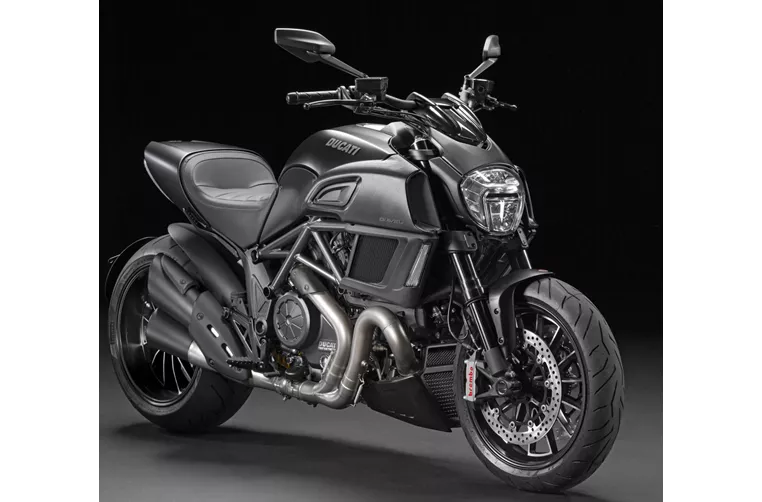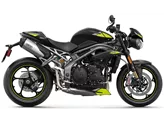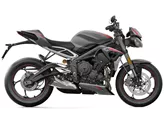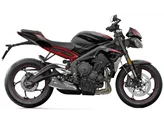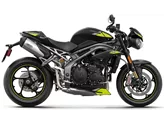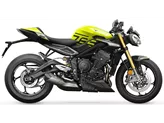Ducati Diavel 1200 2014 vs. Triumph Speed Triple R 2016

Ducati Diavel 1200 2014

Triumph Speed Triple R 2016
Overview - Ducati Diavel 1200 2014 vs Triumph Speed Triple R 2016
In terms of engine power, the Ducati Diavel 1200 2014 outperforms the Triumph Speed Triple R 2016 with 162 HP compared to 140 HP. The Ducati also has a higher torque of 127.5 Nm compared to 112 Nm for the Triumph. However, the Triumph has a slightly smaller engine displacement of 1050ccm compared to 1198.4ccm for the Ducati.
Both bikes feature upside-down telescopic forks for the front suspension, with the Ducati using Marzocchi forks and the Triumph using Öhlins forks. The rear suspension on both bikes consists of a single swing arm with a monoshock, with both using Marzocchi shock absorbers. The suspension components on the Triumph are from Öhlins, which is known for its high-quality performance.

Ducati Diavel 1200 2014
In terms of chassis, the Ducati has a steel frame while the Triumph has an aluminum frame. The Ducati's frame is of the tubular type, while the Triumph's frame is a twin tube design.
Both bikes have four-piston Brembo brakes with radial, monoblock technology for the front brakes. This ensures powerful and precise braking performance.
In terms of dimensions and weights, the Ducati has a wider rear tire at 240mm compared to the Triumph's 190mm. The Ducati also has a longer wheelbase of 1590mm compared to the Triumph's 1435mm. However, the Triumph has a higher seat height of 825mm compared to the Ducati's 770mm. The Ducati has a higher dry weight of 210kg compared to the Triumph's 192kg, but the kerb weight is slightly higher for the Triumph at 212kg compared to the Ducati's 239kg. Both bikes have a fuel tank capacity of around 15-17 liters.

Triumph Speed Triple R 2016
In terms of strengths, the Ducati Diavel 1200 2014 has an improved engine compared to its previous model, as well as a precise clutch and easy flank change. On the other hand, the Triumph Speed Triple R 2016 has a powerful and unique three-cylinder engine, brute brakes, well-functioning electronic features, excellent Öhlins suspension components, and a traditional look.
In terms of weaknesses, the Ducati Diavel 1200 2014 is slightly uncomfortable on lousy asphalt. The Triumph Speed Triple R 2016, on the other hand, has somewhat sluggish handling and a high surcharge for the R version.
Technical Specifications Ducati Diavel 1200 2014 compared to Triumph Speed Triple R 2016
Pros and Cons in comparison
Pros and Cons in comparison
Ducati Diavel 1200 2014
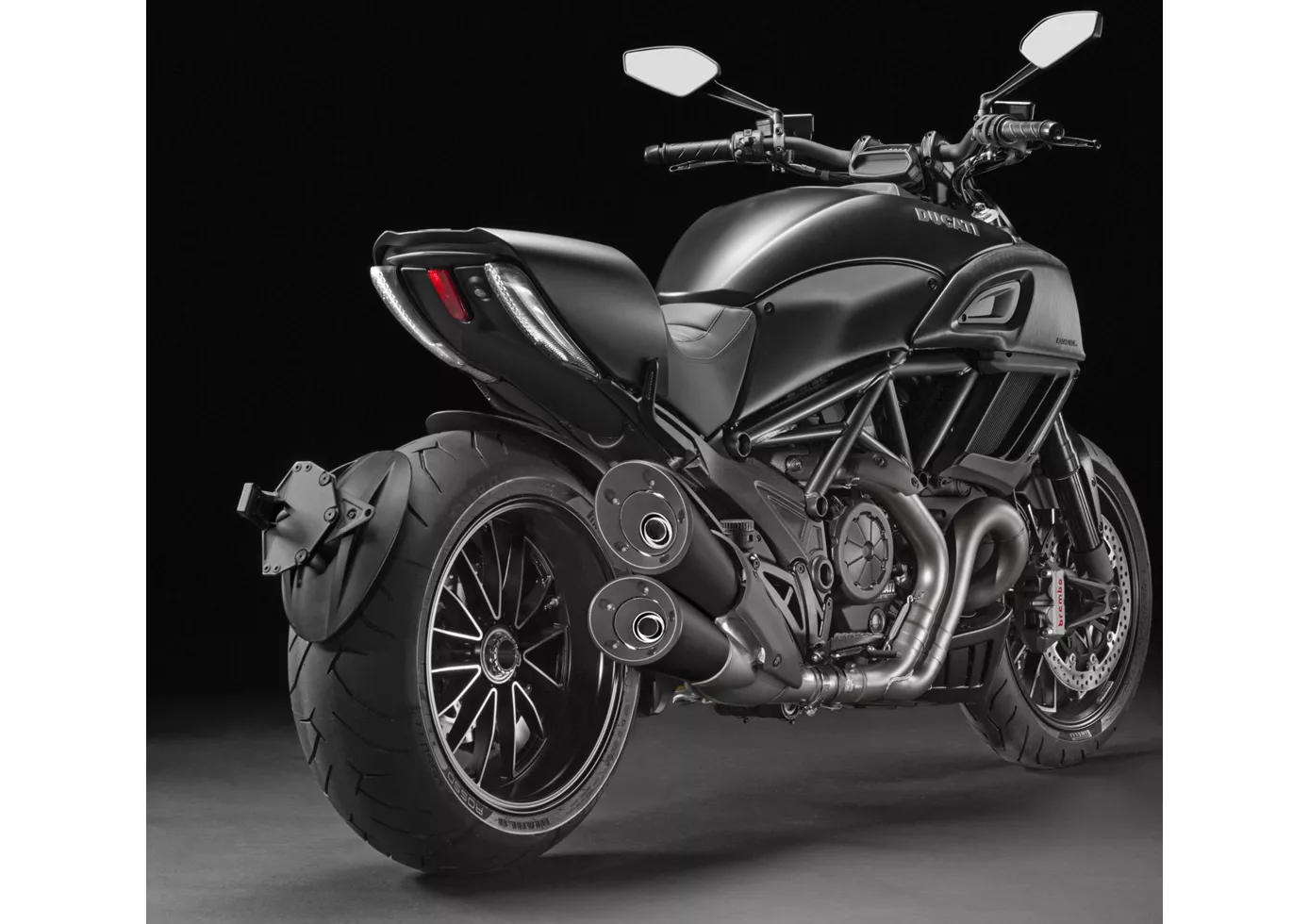
All in all, the Ducati Diavel delivers exactly what it promises visually and surprises with easy rideability and nimble speed on hearty motorbike tracks. Optics and workmanship testify to a real passion for motorbikes. And as befits a devilish motorbike, the Diavel leaves no one cold at the regulars' table.
Triumph Speed Triple R 2016

Like its predecessor, the Speed Triple R delights with its high-quality, sensitively responding Öhlins suspension and its stunning looks. The design remains true to its line - which can only please the many fans. The engine's braking and responsiveness can hardly be complained about, but the lack of power on the competition and the somewhat sluggish handling can certainly be forgiven, after all, the Speed Triple is a classic with history and the design is legendary - which is much more important to true fans than the one or two extra horsepower.
Price Comparison Avarage Market Price Ducati Diavel 1200 vs Triumph Speed Triple R
There are a few key differences between a Ducati Diavel 1200 2014 and a Triumph Speed Triple R 2016. It takes less time to sell a Ducati Diavel 1200 with 116 days compared to 120 days for a Triumph Speed Triple R. Since model year 2011 1000PS.de editors have written 17 reviews for the Ducati Diavel 1200 and 16 reviews for the Triumph Speed Triple R since model year 2012. The first review for the Ducati Diavel 1200 was published on 10/12/2010 and now has more than 6,400 views. This compares to more than 11,100 views for the first review on Triumph Speed Triple R published on 10/24/2011.
